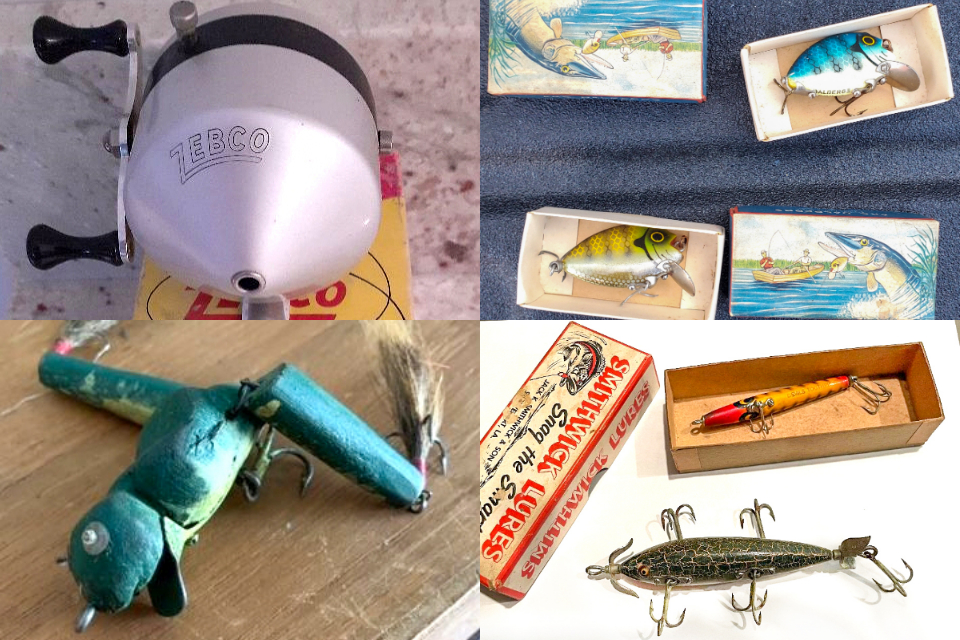
Rob Pavey, a journalist from Augusta, Ga., has collected old fishing lures for more than 35 years and has authored or edited several reference books on old tackle. His educational website is www.mrlurebox.com.
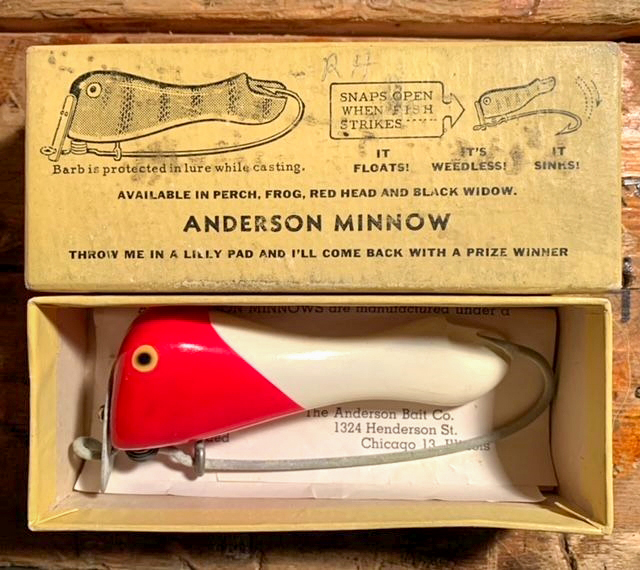
Bill Reckert, email
$150 with box
Anderson Bait Co. of Chicago manufactured this oddly-shaped mechanical lure in the mid-1940s. It featured a spring-loaded weedless device that kept the long single hook sheathed until a fish strike released the barb. The plastic lure was initially sold in a plain mailing carton that is sometimes found with postage stamps attached. This is a scarcer "picture box" with a graphic of the lure on the top, which increases its value among collectors. The literature asserts that "due to mechanical construction, this lure is prohibited in the following states — Minnesota, Pennsylvania, Missouri." Anderson Bait Co. was one of countless small, "mom and pop" tackle companies that collectors group into a category known as "miscellaneous baits.”
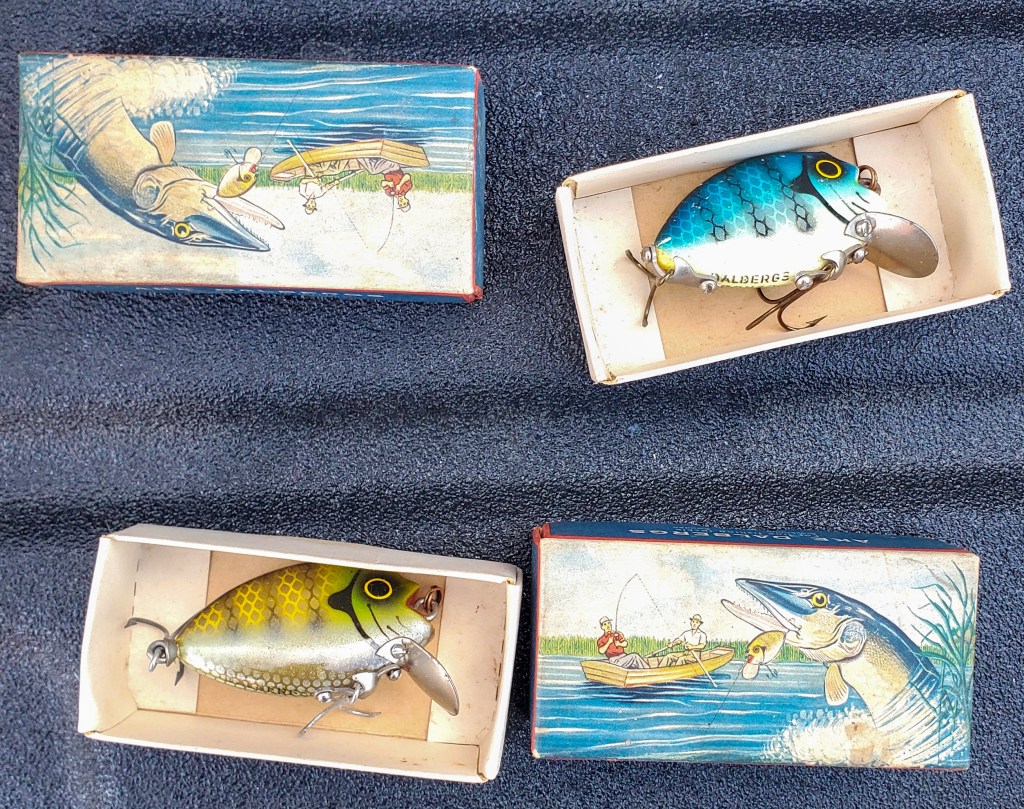
Dave Andrews, email
$75 (apiece, with box)
These handsome lures from Sweden date to around 1950 and are a close copy of the popular Heddon Punkinseed that is a favorite collector's item in the U.S. These two examples, finished in pike scale and bluegill, were likely inspired by their American counterparts and marketed overseas, where U.S. tacklemakers were less likely to challenge companies that copied their design.
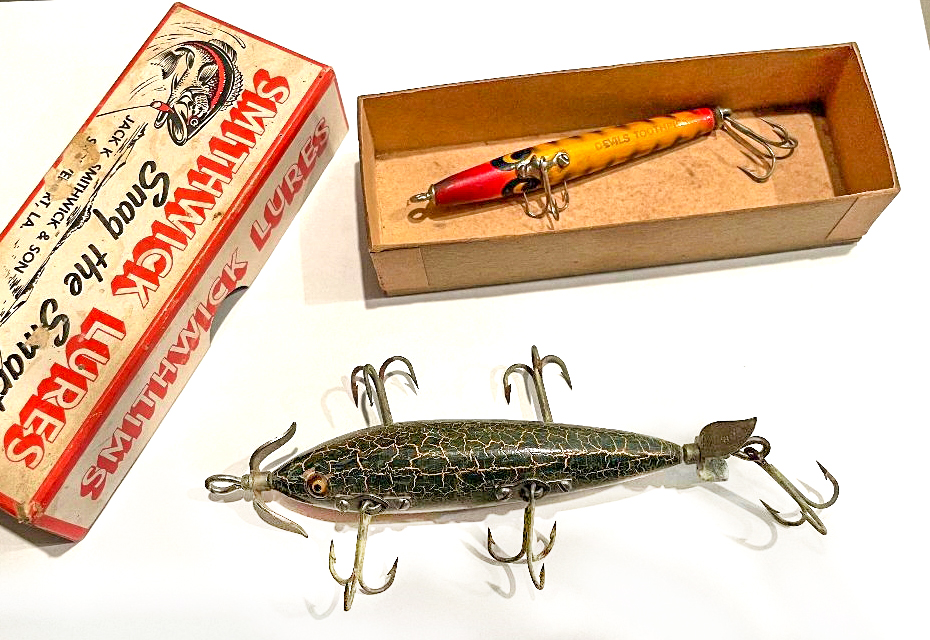
William Hilton, email
$20 (Smithwick in box); and $250 (Heddon minnow)
These two wood lures from the same tacklebox are in comparable, near-excellent condition, but worlds apart in age, value and collector appeal. The Smithwick lure from Shreveport, La., dates to the late ’50s and early ’60s and is common enough that some anglers still fish with them. The Heddon Dowagiac Minnow is a different story. The No. 150 five-hook model was introduced around 1905 and remained in Heddon's line in various styles into the 1950s. This example can be dated to the late 1930s or very early 1940s by the short-lived but unique "toilet seat" hook hardware. The green crackleback, or "fancy back" finish is one of Heddon's classic colors and — most importantly for value — it is in remarkably nice condition.
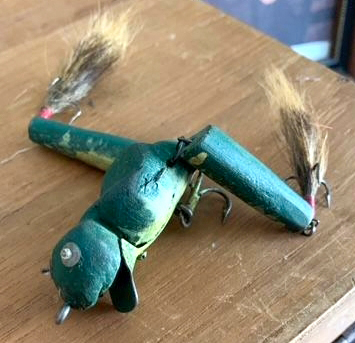
Brent Davis, email
$35 for ingenuity and craftsmanship
This interesting wooden frog lure falls into the collector category known as "folk art." Homemade lures like this one are as unique as snowflakes and difficult to value. During the Great Depression, many anglers had more free time than money to buy fishing gear — and there are many examples of folk art lures from that period. This one closely resembles the commercially produced Wottafrog from Paw Paw Bait Co. of Michigan. The Wottafrog was popular in the 1940s and ’50s — which is likely when this one was made.
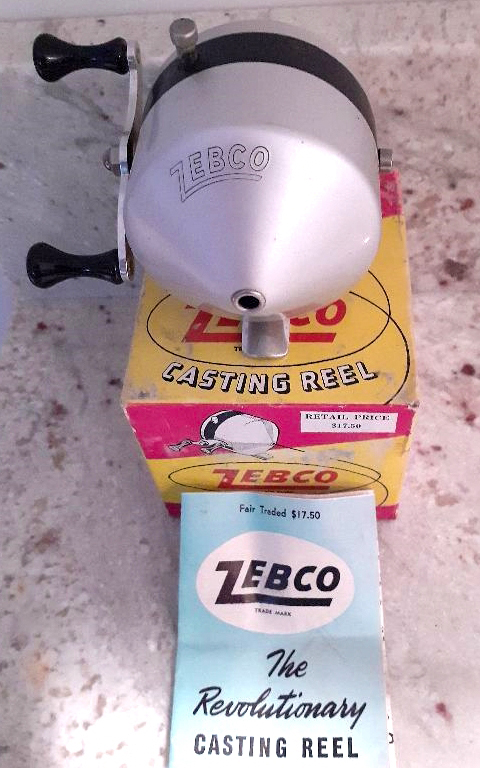
No name given, email
$150+ due to condition
Almost anyone who fished in the ’50s, ’60s and ’70s likely owned a Zebco push button reel at some point. This example is an older model from the early 1950s that remains unused in its original box after all these years. The box carries the "Zero Hour Bomb Company" name of the Tulsa, Oklahoma, company whose decision to manufacture these simple reels had a huge impact on the fishing tackle industry. The Zero Hour Bomb Company, formed in 1932, manufactured time bombs for the oil drilling industry. By the end of WWII, as much of the world's oil production was shifting to the Middle East, they made the transition into fishing reels — and earned a place in angling history.